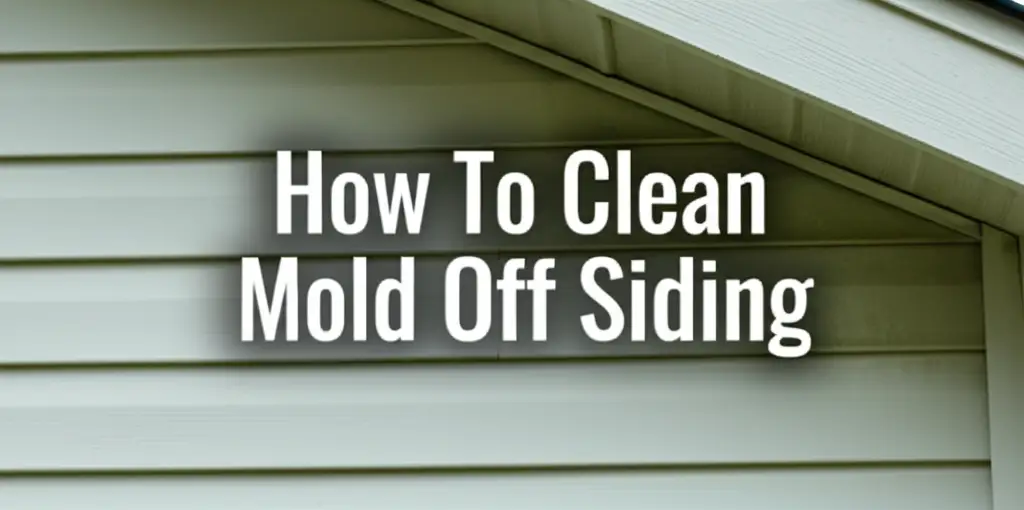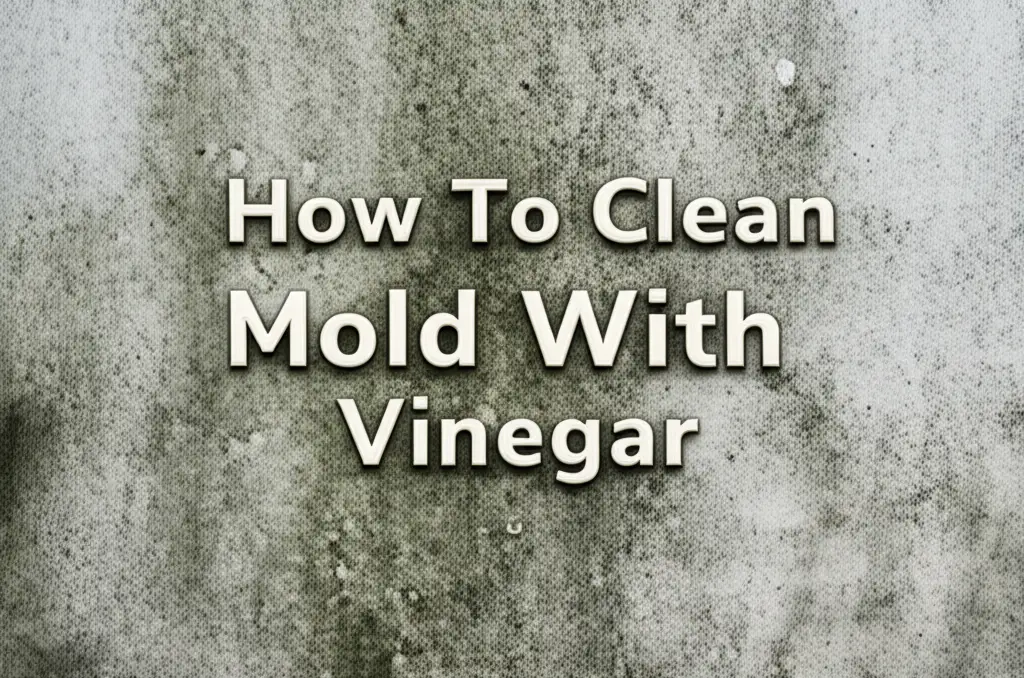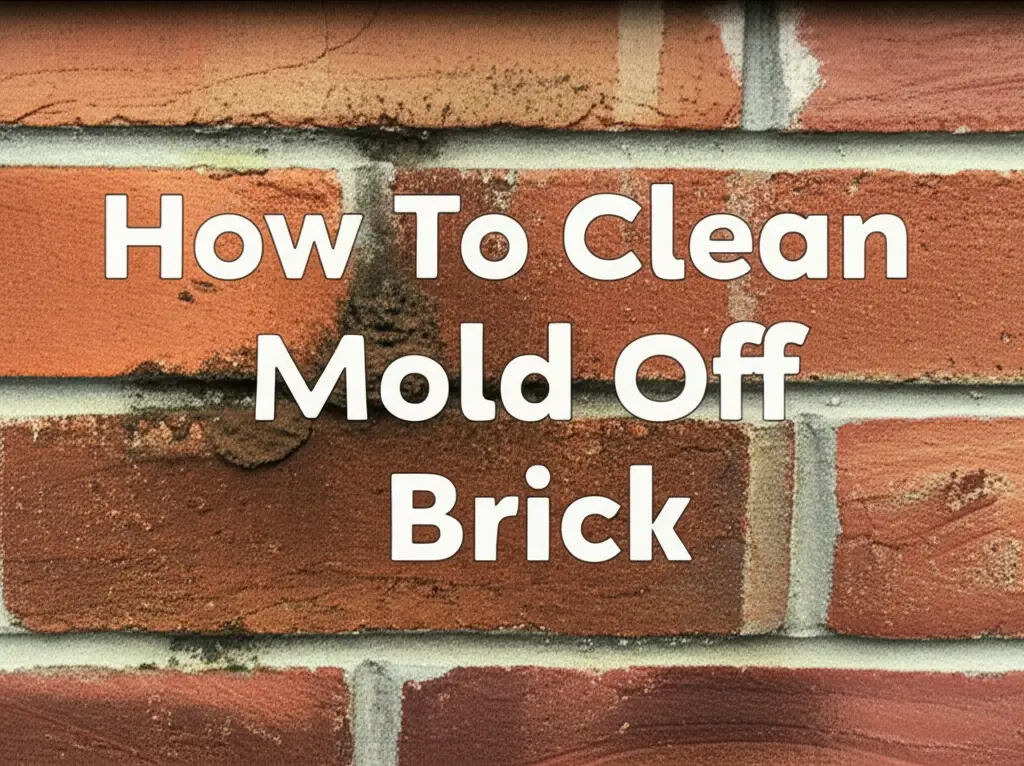· Exterior Home Maintenance · 13 min read
How To Clean Mold Off Siding

Effective Ways to Clean Mold Off Siding
Noticed unsightly green or black patches on your home’s exterior? That is likely mold or mildew growing on your siding. This common problem affects curb appeal and can cause damage over time. Learning how to clean mold off siding is important for every homeowner.
This guide provides practical steps to remove mold safely and effectively. We will explore various cleaning solutions and methods. You will also learn about specific approaches for different siding materials. Finally, we will share tips for preventing future mold growth. Let us get your home looking clean and fresh again.
Takeaway
- Identify the type of mold and your siding material before you begin.
- Always use proper safety gear, including gloves, eye protection, and a mask.
- Choose a cleaning solution that is safe for your specific siding type.
- Apply cleaners correctly and rinse thoroughly to prevent damage.
- Implement preventive measures to stop mold from returning.
To clean mold off siding, first identify the siding material and mold severity. Gather safety gear and prepare the area. Apply a suitable cleaning solution, such as a diluted bleach or vinegar mix. Let the solution work, then rinse the siding thoroughly with a garden hose or a low-pressure setting on a pressure washer.
Understanding Mold on Siding: Why It Grows and Types You Might See
Mold and mildew growth on home siding is a common issue. It usually appears as green, black, or even pinkish stains. These organisms thrive in specific conditions that are often present on exterior surfaces. Understanding these factors helps you address the problem effectively.
Mold needs moisture, organic food sources, and warmth to grow. Siding provides an ideal environment. Rain and humidity keep surfaces damp. Dirt, pollen, and dead plant matter stuck to your siding give mold the food it needs. Shaded areas, especially on the north side of a house, stay damp longer, encouraging more growth.
Several types of mold and mildew can appear on siding. Green algae is very common and looks like a greenish film. Black mold often appears in streaks or patches. Mildew typically looks like a flat, powdery growth, usually white, gray, or black. All of these growths affect your home’s appearance and can trap moisture against the siding material, potentially leading to deterioration over time. Acting quickly to clean mold off siding is always a good idea.
Ignoring mold can lead to bigger problems. It can cause your paint to peel or wood to rot. Mold also affects air quality if spores enter your home. Removing mold quickly protects your home’s structure and helps keep your family healthy.
Safety First: Essential Gear and Preparations Before You Clean
Before you start any cleaning project involving mold, prioritize your safety. Mold spores can irritate your respiratory system, skin, and eyes. Some cleaning solutions also contain strong chemicals. Proper personal protective equipment (PPE) is essential for your well-being.
Always wear safety glasses or goggles to protect your eyes from splashes and airborne particles. A pair of waterproof gloves shields your hands from cleaning solutions. If you use bleach or other strong chemicals, or if mold growth is extensive, wear a respirator mask. This prevents you from inhaling mold spores and chemical fumes. Long sleeves and pants also protect your skin.
Preparation of the cleaning area is also important. Start by moving outdoor furniture, potted plants, and other items away from the work zone. Cover delicate plants, shrubs, and garden beds with tarps. This protects them from chemical overspray and runoff. Make sure children and pets stay clear of the area during cleaning.
Test your chosen cleaning solution on a small, inconspicuous area of your siding first. This step ensures the solution does not discolor or damage your specific siding material. A spot behind a bush or in a hidden corner works well. Wait a few minutes, then rinse it off and check for any adverse reactions before treating the entire surface. Finally, give the siding a good pre-rinse with a garden hose to remove loose dirt and debris. This helps your cleaning solution work better.
Choosing the Right Cleaning Solution for Your Siding
Selecting the correct cleaning solution is vital for effective mold removal without damaging your siding. Different materials and mold severities require different approaches. Consider both commercial products and DIY options.
A popular and effective option is a bleach-based solution. Bleach kills mold and lightens stains. You can mix one part household bleach with four parts water. Apply this solution carefully. Be aware that bleach can harm plants, so protect surrounding landscaping. For detailed steps on using bleach, refer to our guide on how to clean mold with bleach.
For a more eco-friendly option, a vinegar-based solution works well. Distilled white vinegar is a mild acid that kills many mold species. Mix equal parts white vinegar and water in a spray bottle or bucket. Vinegar is generally safer for plants and pets than bleach. To learn more about this method, see our article on how to clean mold with vinegar.
Commercial mold removers are also available. These products are formulated specifically for exterior surfaces. They often contain surfactants and other agents that help loosen mold and prevent re-growth. Follow the manufacturer’s instructions carefully for dilution and application. Always check if the product is safe for your specific siding type.
For light mold or general maintenance, a simple solution of dish soap and water can suffice. Mix a few tablespoons of liquid dish soap into a gallon of warm water. This mixture is good for scrubbing away superficial dirt and very minor mildew. While effective for light cleaning, it may not kill deep-rooted mold spores.
Cleaning Mold Off Different Siding Materials
The type of siding on your home affects the best cleaning method. Different materials respond differently to various cleaners and pressure. Knowing your siding ensures a safe and effective clean.
Cleaning Vinyl Siding
Vinyl siding is a popular choice for homes. It is durable and relatively easy to clean. For vinyl, you can often use a garden hose with a spray nozzle or a pressure washer. If using a pressure washer, use a wide-angle nozzle (like a 25 or 40-degree tip) and keep the pressure below 1,500 PSI. Always aim downward to avoid forcing water behind the panels. A bleach and water solution (1 part bleach to 4 parts water) works well for mold on vinyl. For a comprehensive guide, read about how to clean vinyl siding with a pressure washer.
Cleaning Wood Siding
Wood siding, including cedar shake, requires a gentler approach. Harsh chemicals or high-pressure washing can damage the wood fibers, leading to splintering or etching. Use milder cleaning solutions, such as oxygen bleach (sodium percarbonate) mixed with water. This is less corrosive than chlorine bleach. Apply with a soft brush and rinse thoroughly with a garden hose. For specific advice on cedar shake siding, consult our guide on how to clean cedar shake siding. If you encounter black mold on wood, a specialized wood cleaner might be needed. You can find more information on removing deep stains in our article on how to clean black mold off wood.
Cleaning Aluminum Siding
Aluminum siding is painted or coated, so care is needed to avoid scratching or stripping the finish. Avoid abrasive scrubbers and strong, undiluted chemicals. A mixture of mild detergent and water, or a diluted vinegar solution, is often sufficient. Use a soft-bristle brush and rinse well. High pressure can dent aluminum, so use a pressure washer only on a very low setting, if at all.
Cleaning Fiber Cement Siding
Fiber cement siding, like HardiePlank, is durable but still needs proper care. It can withstand most cleaning solutions, but test an inconspicuous area first. A solution of mild detergent and water, or an oxygen bleach mixture, works well. Use a soft brush or a pressure washer on a low setting. Always rinse thoroughly to remove all cleaning agents.
Always check with your siding manufacturer’s recommendations before applying any cleaning solution. This helps ensure you maintain your warranty and avoid accidental damage.
Step-by-Step Guide: How to Clean Mold Off Siding Effectively
Cleaning mold off siding involves a systematic approach. Following these steps helps ensure thorough removal and good results. This process applies to most siding types once you have chosen your appropriate cleaning solution.
First, apply your chosen cleaning solution to the affected areas. You can use a garden sprayer for larger sections or a spray bottle for smaller spots. Apply the solution from the bottom of the siding up. This prevents streaking and ensures even coverage. Do not let the solution dry on the siding. Work in manageable sections to keep the surface wet.
Allow the cleaning solution to dwell on the moldy surface. The dwell time allows the cleaner to break down the mold and loosen its grip. For most solutions, five to fifteen minutes is enough. Check the product instructions if using a commercial cleaner. If the area starts to dry, mist it lightly with water or more solution to keep it active.
After the dwell time, scrub the moldy areas. Use a soft-bristle brush, a long-handled car wash brush, or a sponge. Scrub gently but firmly to dislodge the mold and dirt. For stubborn spots, you may need to apply a bit more solution and scrub again. Avoid overly aggressive scrubbing, which can damage the siding surface.
Finally, rinse the siding thoroughly. Start rinsing from the top of the section and work your way down. Use a garden hose with a strong nozzle setting or a pressure washer on a low-pressure setting. Make sure all cleaning solution and mold residue are completely washed away. Any left-over cleaner can leave streaks or even damage the siding over time. Proper rinsing is crucial for a clean finish.
Pressure Washing Siding: When to Use It and How to Do It Safely
Pressure washing can be a fast and effective way to clean mold off siding. However, it requires careful technique to avoid damage. Not all siding types are suitable for high pressure. Understanding when and how to use a pressure washer is important for safety and good results.
Pressure washing works well for vinyl, fiber cement, and some metal sidings. It quickly removes stubborn mold, dirt, and grime. The strong stream of water blasts away contaminants. It can save time and effort compared to manual scrubbing, especially on large homes. However, high pressure can damage delicate surfaces. It can also force water behind siding panels, leading to moisture problems inside walls.
When using a pressure washer, select the correct nozzle and pressure setting. For most siding, a 25-degree (green tip) or 40-degree (white tip) nozzle is recommended. These tips create a wider spray pattern, reducing the risk of damage. Keep the pressure between 1,000 and 1,500 PSI for vinyl siding. Wood and older siding materials may require even lower pressure, often below 1,000 PSI. Always start with the lowest effective pressure.
Maintain a consistent distance from the siding, typically 12 to 18 inches. Spray in even, overlapping strokes, moving from top to bottom. Never aim the spray upward at overlapping siding panels. This forces water into the wall cavity. Avoid pointing the nozzle at windows, doors, or electrical fixtures. These areas are prone to water intrusion or damage.
Always wear safety glasses when pressure washing. The high-pressure stream can kick up debris. Make sure your footing is stable, especially when working on a ladder. If you are unsure about pressure washing your specific siding, consult a professional or stick to manual cleaning methods. Proper technique prevents damage and ensures a clean, mold-free exterior.
Preventing Mold Recurrence on Your Home’s Exterior
Cleaning mold off siding is only half the battle. Preventing its return is essential for long-term protection and a beautiful home. Mold thrives in specific conditions, so addressing these factors helps keep your siding clean.
One key to prevention is improving drainage around your home. Ensure your gutters are clean and direct water away from the foundation. Downspout extensions can guide rainwater several feet away from the house. Standing water near your siding creates a constant moisture source for mold. Grade your landscaping so that water flows away from the house, not towards it.
Enhancing air circulation and sunlight exposure also helps. Mold loves damp, shaded areas. Trim back trees, bushes, and shrubs that are too close to your siding. This allows sunlight to dry the surface more quickly after rain or dew. Increased airflow also reduces humidity levels directly on the siding, making it less hospitable for mold growth. Aim for at least a foot of clearance between plants and your house.
Consider applying a mold inhibitor or sealant after cleaning. Some products create a barrier that discourages mold and mildew growth. These are typically applied after the siding is completely clean and dry. Always choose products designed for exterior use and compatible with your siding material. Read product labels carefully for proper application instructions and expected longevity.
Regular cleaning is also a strong preventive measure. Even a simple wash down with a garden hose once a year can remove accumulated dirt, pollen, and spores before they become a mold problem. Inspect your siding periodically for early signs of mold. Addressing small areas quickly prevents extensive growth and makes future cleaning easier. These proactive steps keep your siding clean and looking its best year-round.
FAQ Section
Is mold on siding dangerous?
Mold on siding is primarily a cosmetic issue. It can make your home look unkempt. It may also damage the siding over time by trapping moisture or degrading finishes. For most people, direct exposure to outdoor mold poses minimal health risks. However, removing it improves curb appeal and protects your home’s exterior structure.
How often should I clean mold off my siding?
The frequency depends on your local climate, sun exposure, and proximity to trees. In humid areas or if your house is heavily shaded, you might need to clean every one to two years. For sunnier homes in drier climates, every three to five years may suffice. Inspect your siding annually for early signs of mold.
Can I use a regular garden hose to clean mold off siding?
For light mold or recent mildew, a strong spray from a garden hose can sometimes be enough. Combine it with a soft-bristle brush and a mild detergent solution. A garden hose lacks the power of a pressure washer for deep-seated or extensive mold. It is a good option for regular maintenance.
What if mold returns quickly after cleaning?
If mold returns fast, it often means the underlying conditions for its growth persist. Evaluate your landscaping for excessive shade or plants too close to the siding. Check your gutters for clogs. Consider applying a mold inhibitor after cleaning. Improving drainage and increasing sunlight exposure usually helps.
Should I hire a professional for severe mold?
For very extensive mold growth, particularly on high areas or if you are uncomfortable with the cleaning process, hiring a professional is a good idea. Professionals have the right equipment and experience. They can ensure a thorough cleaning without damaging your siding. This is especially true for delicate materials or large, multi-story homes.
Conclusion
Cleaning mold off siding is a vital task for any homeowner. It protects your property from damage and restores its curb appeal. We covered everything from understanding mold growth to selecting the right cleaning solutions and applying them safely. Remember to prioritize your safety with proper gear and to test solutions on small areas first.
Whether you choose a gentle scrubbing method or opt for careful pressure washing, consistent effort yields clear results. Do not let unsightly mold detract from your home’s beauty or compromise its structure. Take action today to clean mold off siding. Implement the preventive measures discussed to ensure your home remains mold-free and visually appealing for years to come. Your home will thank you.
- Mold Removal
- Siding Cleaning
- House Maintenance
- DIY Cleaning




